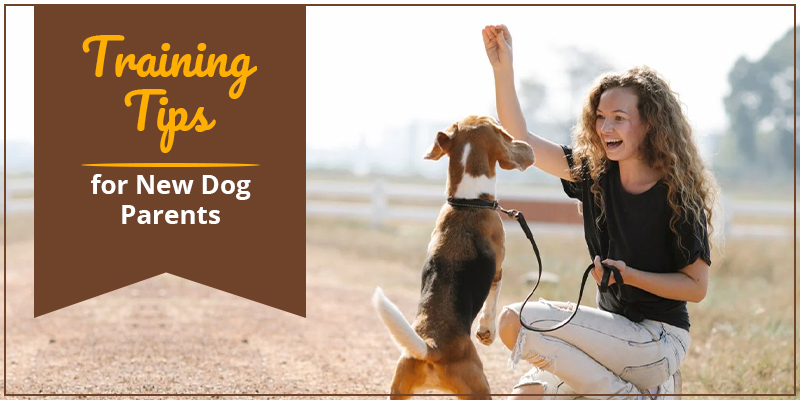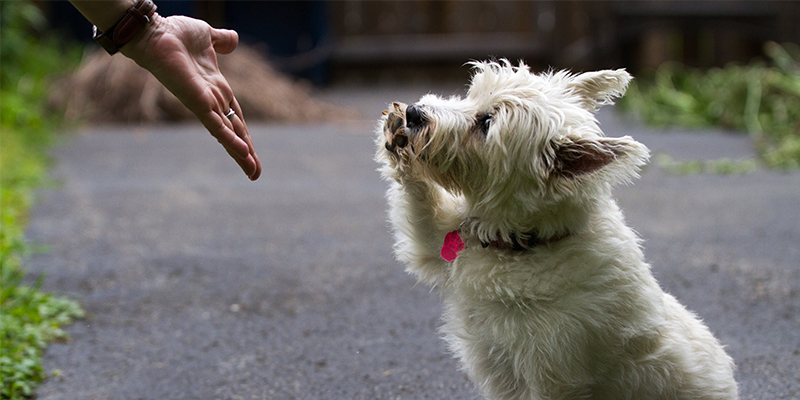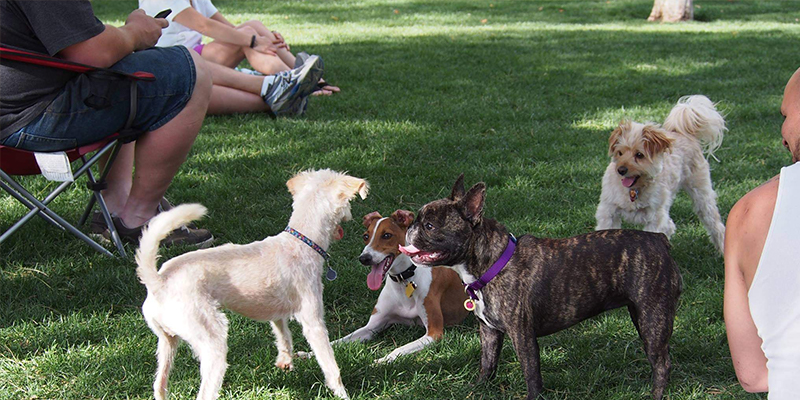
Dogs are noble companions, and they have the power to add tones of joy to your life!
But as Uncle Ben said,
“With great power comes great responsibility.”
When you bring a dog home, you bring lots of fun but also responsibilities. One of these responsibilities is training your dog.
You can ask your friends or relatives who have trained about the challenges they faced, and also about its benefits. And even if they simp about the hardships of training their dog, the reward is immeasurable!
If you are a new dog parent, it can be intimidating at first. But you will learn to train them well. And to help you, we are sharing the top 8 training tips for new dog parents.
These tips will answer all of your questions about how to train your dog, so keep reading.
And remember, like a human child, dogs may take time to learn your ways, so have patience and be paw-sitive!

8 Training Tips for First-Time Dog Parents
Tip 1: Train on a Schedule
Many new dog parents make a common mistake when they train their dog. They train their pets at random times! Someday in the morning, someday in the evening, someday before a meal, and like that, they train them at their convenience. This may be convenient for you, but it is more confusing for your dog. Instead, train them on a schedule.
Having a fixed schedule for training your dog will help your dog feel more comfortable with the training. They will know what to expect during that time period, and you can train them well. This will also enable them to understand your routine. It will especially help when housetraining your new dog!
Tip 2: Train the Most Important Command First
Another important thing to remember when training your dog is to start with basic commands such as “no,” “good,” “sit,” “come,” etc. These commands will help your pet learn basic behavior.
Say “no” to them in a stern voice whenever they do something inappropriate. This will help them understand that what they are doing isn’t appropriate.
Say “good” to them in a cheerful voice, and often reward them with treats or something when they are doing appropriate things. Through this approach, they will gain an understanding of appropriateness and be motivated to act accordingly for rewards.
Once your dog has learned the basic commands, move on to the more complex ones. It’s important to have a solid foundation in order to train your dog successfully for more complex tasks.
Tip 3: Keep the Training Session Short

Unlike you, your dog may not have a focused mind. And so, long training sessions may not be a good idea. Dogs usually have short attention spans of 10 to 15 minutes, and too much simulation can lead to boredom.
Thus, keep your training sessions short and well-defined. Focus only on one command at a time, because training for too many commands at a time is only going to confuse your dog. Short and frequent training sessions of 10–15 minutes with a single goal in mind can result in efficient dog training.
Tip 4: Reward, Do Not Punish
Your dog is going to make a lot of mistakes during the training, and that’s completely okay. Simply saying “no” in a stern voice would help in such situations rather than punishing them in other harsh ways. Instead, reward their good behavior without limiting it to when they follow your commands. When you reward your dog for their good deeds, it will encourage them to keep up their good behavior. And eventually, your dog will start following your training commands.
Additionally, punishing your dog is only going to suppress their misbehavior. It will not eliminate it entirely. Moreover, hurting your dogs will only make them fear you, and it can even make them aggressive. Instead, say “no” or “bad” to his inappropriate things. This will let them know that they have done something wrong.
Tip 5: Learn How to Communicate
Communication is a two-way process. As you speak, your dog also tries to communicate. Though dogs don’t speak, they can express themselves through certain actions. It is important to understand those actions so that you can act accordingly during your training sessions.
For example, if your dog suddenly starts to scratch the door of the house, it may mean that they need to pee or poop. Or, if your dog suddenly stands still while you are telling him to do something, it may indicate that he is not comfortable doing that. It is important to understand your dog’s body language in order to understand them and train them properly.
Tip 6: Socialize Often

When you let your dog meet different people and pets and expose them to different environments, they get more comfortable outside your house. If you have a puppy, start socializing them early so that they don’t fear going out and readily adapt to changing environments. The more positive social interactions your dog is exposed to, the more relaxed they become as an adult. Furthermore, dogs that don’t receive adequate social interaction in their puppyhood often tend to be aggressive and show persistent barking and fear in adulthood.
Tip 7: Be Ready for Setbacks
Like our children, dogs make mistakes too, so don’t put up a show if he chews up your shoe or scratches your furniture; it’s all part of having a dog. These behaviors can be managed and prevented with training. Make sure to let them know of their inappropriate behaviors by saying “no” and stopping giving them attention. Again, do not punish them in any harsh way, as it can mess up their mental health and even make them aggressive.
Tip 8: Have Patience and Relax
Finally, the most important thing to do when you are training your dog is to have patience and relax while your dog learns new things slowly and steadily. Remember that learning takes time, and you have to give your dog the time he needs to learn. And don’t be angry when they forget and make mistakes. We all made mistakes when we were young.
[Also Read] Follow these Useful Tips to Safeguard your Furry Kid
Enjoying Training Your Dog
Though a bit overwhelming, training a dog is super exciting and fun. The efforts you put into training your dog are highly rewarding when he becomes a well-behaved and composed dog for life.
The post Training Tips for New Dog Parents appeared first on CanadaVetCare Blog.
